How on earth did those small arborvitae I planted in front of the house get so huge? It happens all the time. Either a previous owner, or maybe it was you, planted something that was tiny when it was new, but over the years, it has slowly turned into a hulking monster.
It can be hard to imagine the size that a shrub or tree will eventually achieve – even in a few years, let alone when it is fully mature. Plant companies and breeders know that this a common problem, so the influx of dwarf (or if you are seeing Latin names that include the words ‘nana’ or ‘compacta’) varieties are increasingly common. But if there is no dwarf variety available, you may find you need to seek out other options. Here are some smaller options for four of the most loved but often overgrown garden plants. We are talking about Arborvitae, Lilac, Birch, and Butterfly Bush.
If they are all too big, here are four great alternatives for beloved plants that just don’t fit.
More Manageable Alternatives for the Giant Overgrown Arborvitae
Arborvitae, commonly found in nurseries, are among the most affordable evergreen trees. Lots of people buy them because the cost of instant impact – as opposed to waiting for something to grow – is relatively affordable. This is why they have become a ubiquitous and predictable presence in many gardens.
The good news is that they really are not the worst trees – Thuja occidentalis, (commonly known as American arborvitae or Eastern white cedar, though it is not a true cedar) is native to the Northeast and west to the Great Lakes Region. They grow quickly, so they are often relied upon for privacy and as screening – but because of their popularity, they do tend to grow in places that aren’t ideal. They can top out at anywhere from 20 to 60 feet tall —not exactly what you want in front of your living room window.
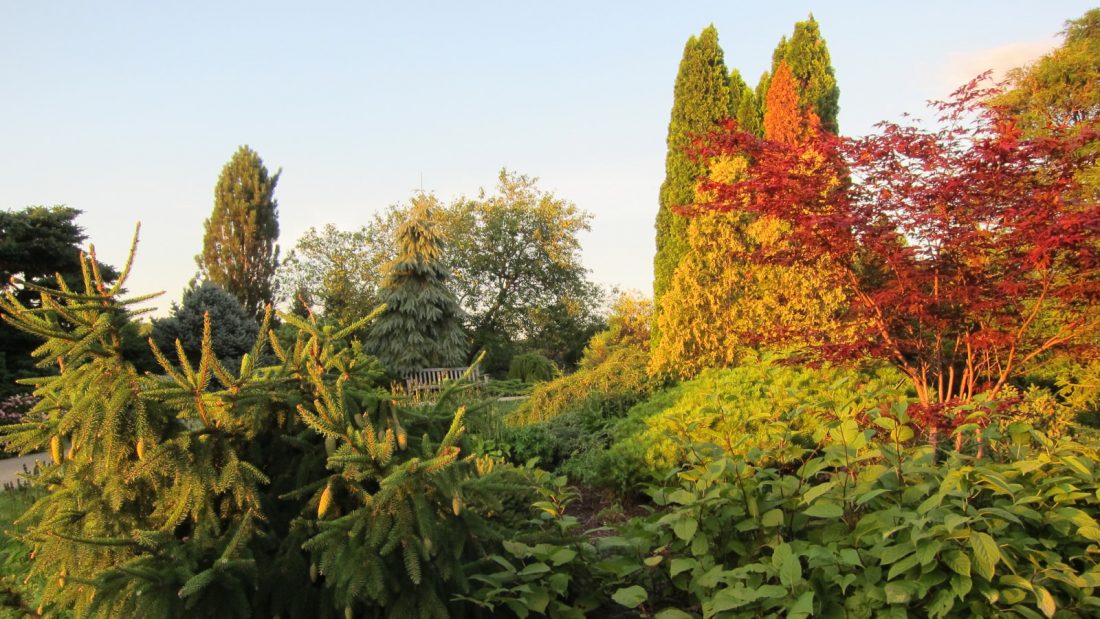
Alternatives to big bush Arborvitaes
There are arborvitae varieties that are smaller – look out for Thuja occcidentalis ‘De Groot’s Spire’ (pictured above in the background). Thuja occcidentalis ‘De Groot’s Spire’ is a slim, tall-ish column that slowly grows to just 15 feet tall and 4 feet wide. A much better solution for a small front garden or at the corner of a foundation.
Thuja occcidentalis ‘De Groot’s Spire’ is a cultivar of the native Eastern arborvitae that works beautifully as an accent tree or a repeating vertical theme in a large mixed border. It prefers full sun to part sun and will be much less dense if grown in shade. USDA Zones 3-8.
What looks like an arborvitae (but offers something better)?
Juniper is my personal favorite arborvitae alternative. Juniperus virginiana (or eastern red cedar) is also native and provides a varied texture. It does not grow as fast and it best in a drier spot (too much moisture can make juniper brown). Additionally, I love Juniperus scopulorum ‘Wichita Blue’ – it is not native to New England – but it is native to the rocky mountain region where I grew up – I love this tree for its toughness and the beautiful blue boughs.
Lilac Landscaping Ideas – Try Smaller Lilacs for more variety and color
Need a ladder to smell your lilacs? Here are some dwarf alternatives to overgrown lilacs
The common lilac, Syringa vulgaris, matures at 12 to 20 feet tall and spreads 8 to 15 feet across. A good alternative is S. meyeri ‘Palibin’, a compact 4-5 foot cultivar of Korean lilac. Or Also, The Bloomerang lilacs (S. x ‘Bloomerang’, ‘Bloomerang Purple’) were developed using S. meyerii as a parent and are a great, short 3-4 foot alternative.
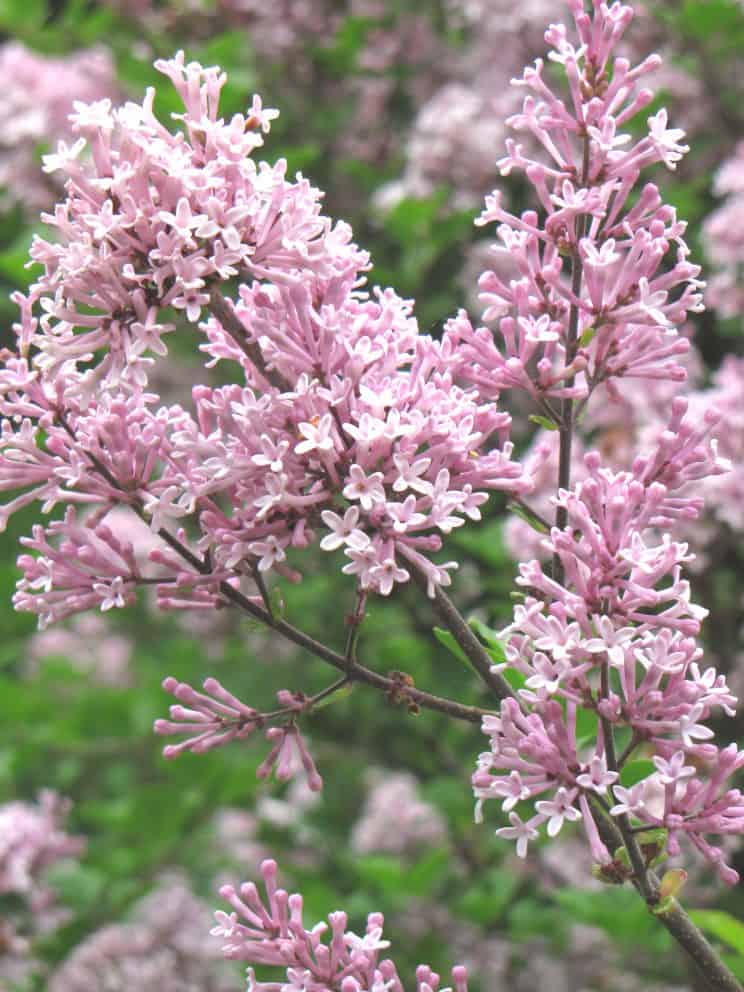
Syringa meyeri ‘Palibin’ has pale pink, fragrant flowers that bloom profusely in late spring. As a bonus, its foliage is quite resistant to powdery mildew. Full sun, USDA Zones 4-7.
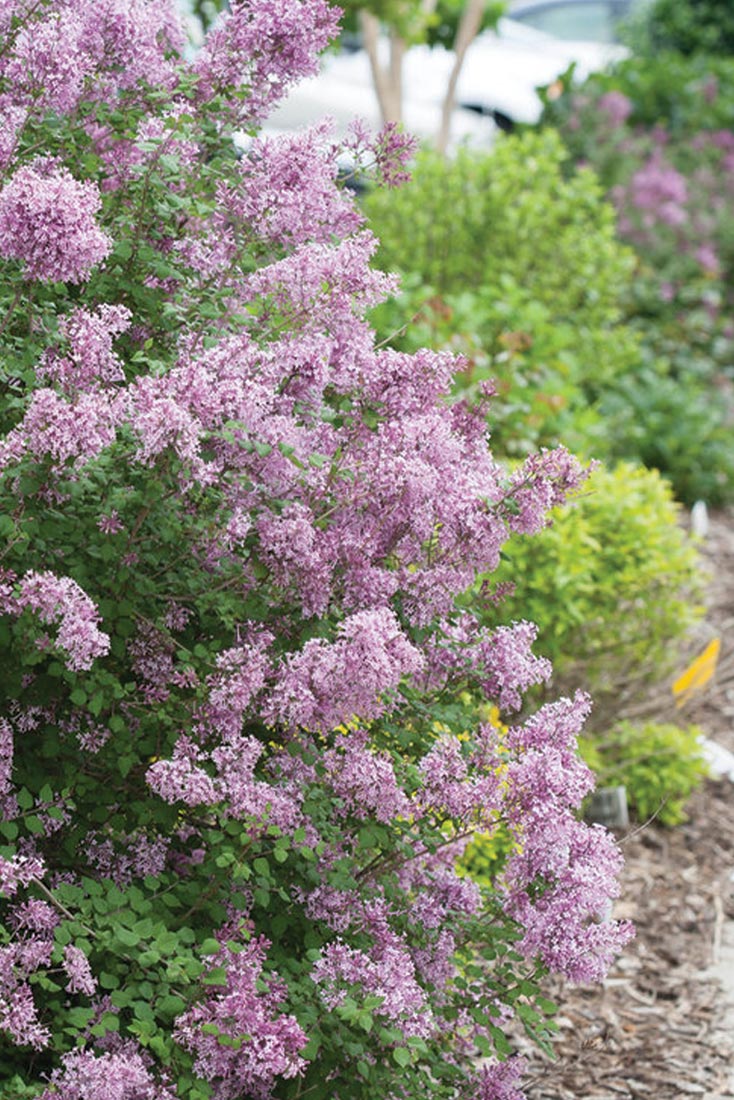
Bloomerang lilacs (Syringa x ‘Bloomerang’, ‘Bloomerang Purple‘) are a great 3 to 4 foot alternative to the larger and more mildew-prone common lilac, S. vulgaris. Another plus is their sporadic re-bloom throughout the summer and into fall. Full sun, USDA Zones 4-7.
Too Big Birch Trees – Smaller Betula for the Garden
Why did you think that river birch would work as a foundation plant?
River birch is a beautiful native tree with gorgeous form and bark, accompanied by a great constitution, but it is also fast-growing to and can quickly reach 30 to 40 feet. It’s baby cousin, however, Betula nigra ‘Little King’, is just as nice but it tops out at no more than 12 feet.
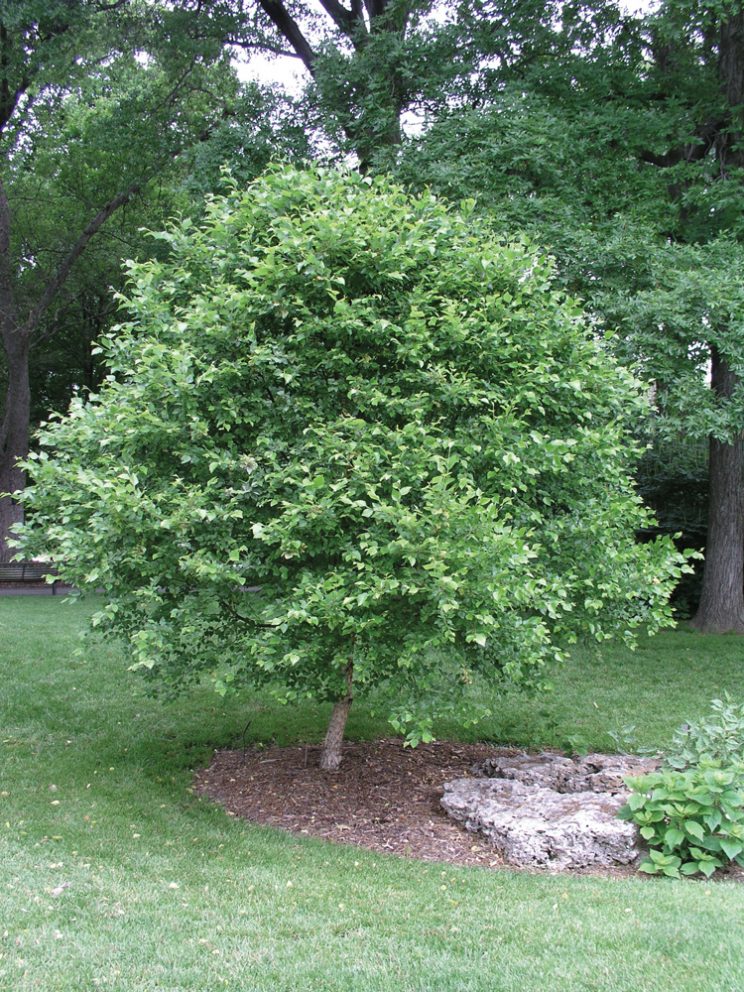
Betula nigra ‘Little King’ (Fox ValleyTM River Birch) is a dense, compact, multi-stemmed shrub with an irregular crown, typically growing close to 10 feet tall and wide. It fits nicely in a foundation garden or as a centerpiece of a mixed border. Full Sun to Part Shade, USDA Zones 4-9.
Also – if you love the look of the peeling bark but don’t want to worry about a birch tree getting too big too fast (As they will), you can plant Acer Griseum. It is a beautiful ornamental tree for zones 4-8 – that tops out at 20-30 feet and keeps a more tidy and rounded habit. It is not, however, native to the USA (Acer griseum is native to China).
If The Butterfly Bush is too Big – Consider Dwarf Buddleia
Love butterflies, but can’t get over the big ugly butterfly bush mess that happens every winter?
The further south you get, the more the oversized butterfly bush becomes a problem. Butterfly bush is not native, and it can become a giant in areas that don’t fully freeze (hard freezes will kill the woody stems of butterfly bush back to the ground, keeping them more manageable in northern climates)
Late summer blooms and butterflies, especially in a small garden, can be had with dwarf Buddleia x ‘Lo and Behold’ series – none gets more than 3 feet tall.
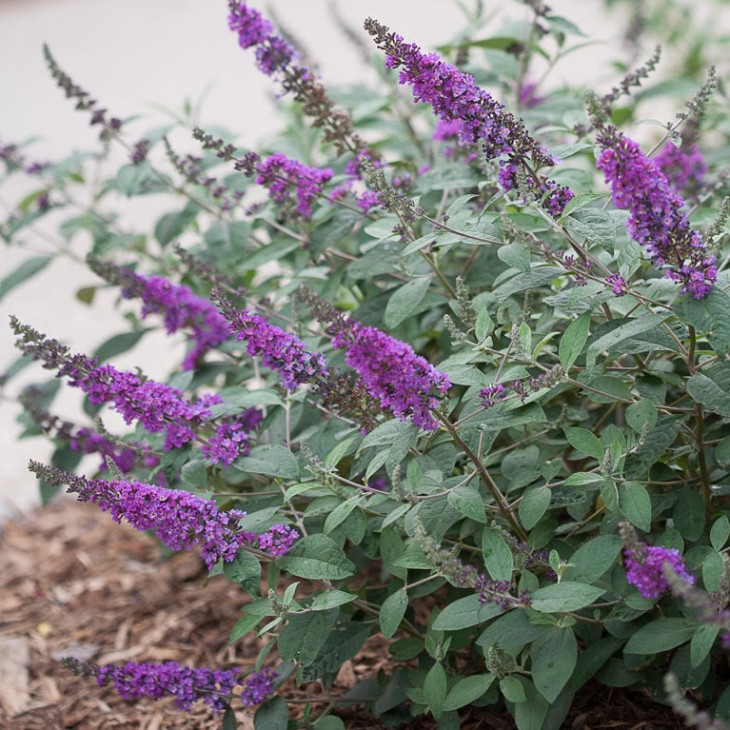
Replacing Butterfly Bush Shrubs – Some Alternatives
The ‘Lo and Behold series offers lots of color choices: blue, lilac, pink, and deep purple. Anyone (or a combination) would make a fantastic mass planting in a hot, dry, sunny spot, and you can sit back and watch the butterflies at play. Full sun, Zones 5-9.
Alternatively – you could consider native shrubs that draw even more pollinators than butterfly bushes. There are some better alternatives to overgrown plants. Viburnum dentatum Southern Arrowood, Ceanothus americanus New Jersey tea, Cephalanthus occidentalis Buttonbush, and Clethra alnifolia Sweet Pepperbush are all great native smaller shrubs (depending on where you live) that will not be as unruly as a butterfly bush.
Share this Post:
Other posts about alternatives to overgrown plants or other equally tricky trees and shrubs:

IMAGES: COURTESY OF MONROVIA, COURTESY PROVEN WINNERS, KM BY CC, CHRISTINE RIGGLE BY CC.
Written by Joanne Neale for PITH + VIGOR
My father planted a small bush in our back garden about twenty years ago, thinking it would only grow to about 6-feet. It is now a 20 feet tall colossus, and about 10 feet broad. You really need to do your homework!